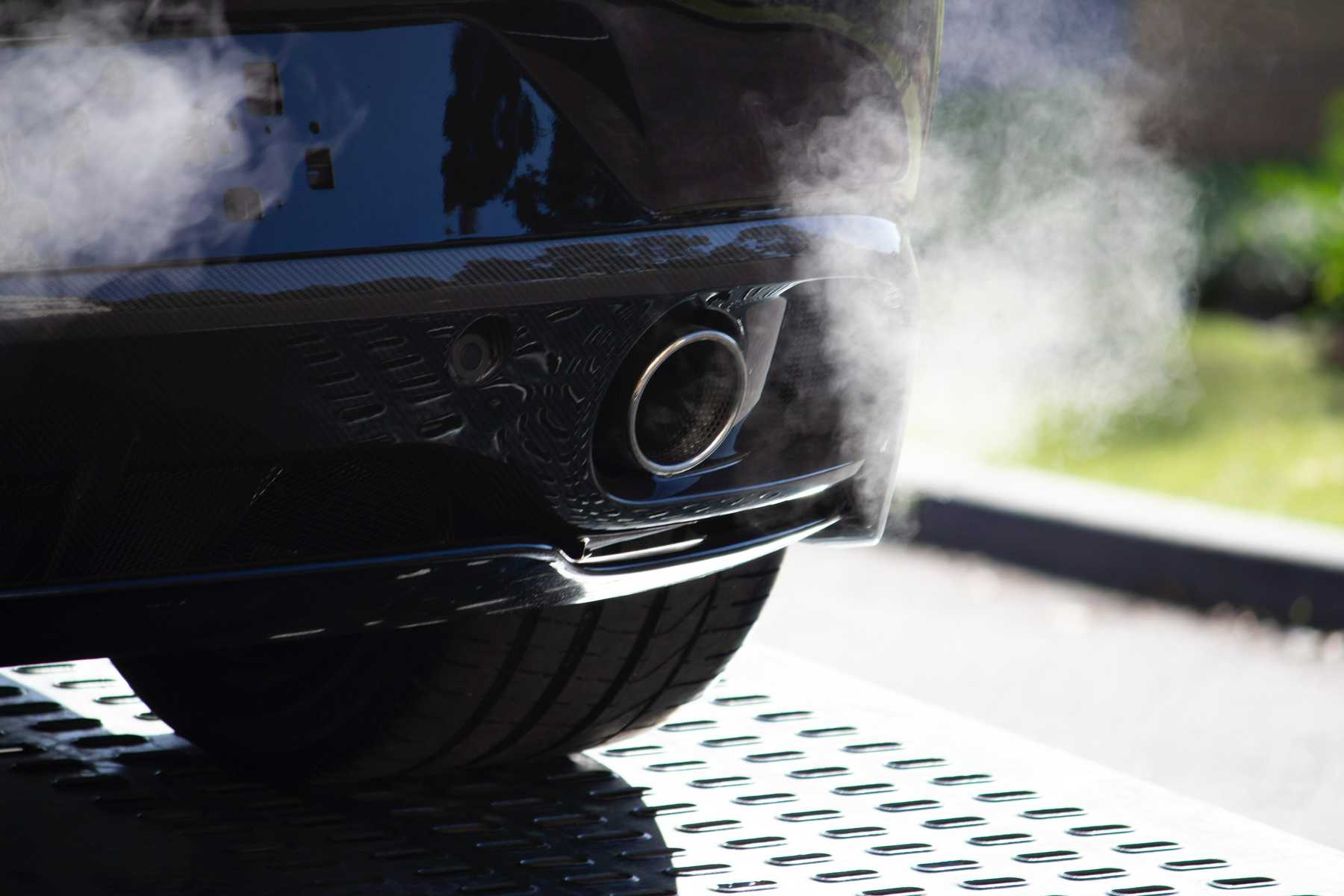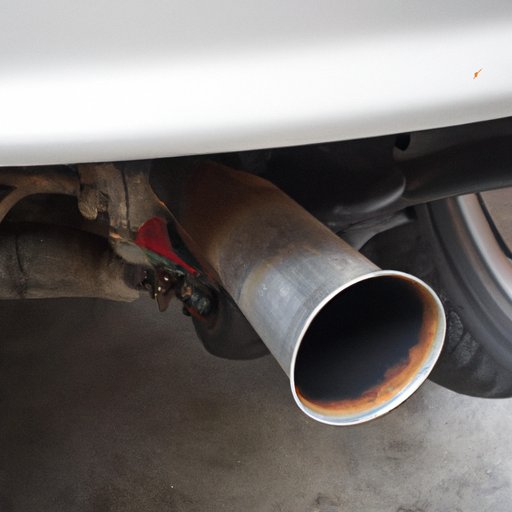How To Fix Exhaust Leak: A Comprehensive Guide For Every Car Enthusiast
Let’s face it, folks—an exhaust leak isn’t just annoying; it’s a potential danger to your health and wallet. If you’ve ever noticed a hissing sound or a strange smell under your car, you might be dealing with an exhaust leak. Don’t panic! Fixing it is easier than you think, and we’re here to walk you through the entire process step by step.
Now, before we dive deep into the nitty-gritty of how to fix exhaust leak, let’s take a moment to understand why this issue matters. An exhaust system isn’t just about muffling noise; it plays a crucial role in removing harmful gases from your engine and ensuring your car runs efficiently. Ignoring an exhaust leak can lead to reduced fuel efficiency, engine damage, and even carbon monoxide poisoning. Yikes!
So, whether you’re a seasoned mechanic or a complete newbie, this guide will equip you with the knowledge and tools to tackle this problem like a pro. Let’s get started, shall we?
Table of Contents
- Understanding Exhaust Leaks
- Common Causes of Exhaust Leaks
- Symptoms of an Exhaust Leak
- How to Diagnose an Exhaust Leak
- Tools and Materials Needed
- Step-by-Step Guide to Fixing an Exhaust Leak
- Safety Precautions
- Cost Considerations
- Alternatives to DIY Repairs
- Conclusion: Keep Your Car Running Smoothly
Understanding Exhaust Leaks
Alright, let’s break it down. Your car’s exhaust system is like the lungs of your vehicle—it takes in harmful gases and expels them safely. But when there’s a leak, these gases escape prematurely, creating all sorts of problems. An exhaust leak can occur anywhere along the system, from the manifold to the tailpipe. And trust me, you don’t want to ignore it.
Here’s the deal: exhaust leaks can cause your car to run hotter, burn more fuel, and emit dangerous fumes into the cabin. Not to mention, that annoying hissing sound can drive anyone crazy. So, understanding the system and how it works is the first step in fixing the issue.
Key Components of the Exhaust System
Before you start tinkering with your car, it’s important to know the parts involved. The exhaust system typically includes:
- Exhaust manifold
- Catalytic converter
- Muffler
- Pipe connections
- Tailpipe
Each of these components can develop leaks over time due to wear and tear, corrosion, or improper installation. Knowing where the leak is coming from is half the battle.
Common Causes of Exhaust Leaks
Let’s talk about the usual suspects. Exhaust leaks don’t just happen out of nowhere; they’re often the result of neglect or normal wear and tear. Here are some of the most common causes:
Corrosion
Rust is a major culprit when it comes to exhaust leaks. Moisture and road salt can eat away at the metal components, creating holes and weak spots. If you live in a coastal area or somewhere with harsh winters, corrosion is something you’ll need to keep an eye on.
Loose Connections
Over time, the bolts and clamps that hold the exhaust system together can loosen, leading to gaps where exhaust gases can escape. Vibrations from the engine and road conditions can exacerbate this problem.
Damaged Components
Cracks in the exhaust manifold or catalytic converter can also cause leaks. These components are subjected to extreme temperatures and pressures, so they’re not immune to damage.
Symptoms of an Exhaust Leak
Now that we know what causes exhaust leaks, let’s talk about how to spot them. If your car is trying to tell you something, you better listen. Here are some telltale signs:
Loud noises—If you hear a hissing, roaring, or popping sound coming from under your car, it’s probably an exhaust leak. The noise is caused by exhaust gases escaping through a hole or gap in the system.
Unusual smells—A strong smell of exhaust fumes inside the cabin is a red flag. This could indicate a leak near the manifold or a damaged gasket.
Reduced performance—If your car feels sluggish or struggles to accelerate, it might be due to an exhaust leak. The engine isn’t getting the proper amount of oxygen, which affects its performance.
Other Warning Signs
- Vibration in the cabin
- Increased fuel consumption
- Illuminated check engine light
These symptoms might seem minor, but they’re your car’s way of saying, “Hey, I need some attention!” Ignoring them can lead to bigger problems down the road.
How to Diagnose an Exhaust Leak
Okay, so you suspect you have an exhaust leak. Now what? Diagnosing the issue is crucial before you start making repairs. Here’s how you can pinpoint the problem:
Visual inspection—Pop the hood and take a good look at the exhaust manifold and surrounding components. Look for signs of rust, cracks, or loose connections. Don’t forget to check underneath the car as well.
Listening test—Start the engine and listen for unusual sounds. A hissing or roaring noise usually indicates a leak. Follow the sound to its source to determine where the problem lies.
Smoke test—If you’re really serious about finding the leak, you can use a smoke machine to fill the exhaust system with smoke. The smoke will escape from the leak, making it easy to locate.
Pro Tip
Make sure the engine is cold before you start inspecting. Hot exhaust components can cause serious burns if you’re not careful.
Tools and Materials Needed
Before you dive into the repair, gather your tools and materials. You’ll need:
- Wrench set
- Socket set
- Exhaust sealant
- New gaskets (if necessary)
- Sandpaper or steel wool
- Protective gloves and goggles
Having the right tools will make the job easier and ensure a proper repair. Don’t skimp on quality—cheap tools can lead to more problems later on.
Step-by-Step Guide to Fixing an Exhaust Leak
Alright, let’s get to the good stuff. Here’s how you can fix an exhaust leak like a pro:
Step 1: Locate the Leak
Using the methods we discussed earlier, find the exact location of the leak. This will determine the type of repair you need to perform.
Step 2: Clean the Area
Use sandpaper or steel wool to clean the area around the leak. Removing any rust or debris will help the sealant adhere better.
Step 3: Apply Exhaust Sealant
Apply a generous amount of exhaust sealant to the leak. Make sure it’s designed for high-temperature applications and let it dry according to the manufacturer’s instructions.
Step 4: Replace Damaged Components
If the leak is caused by a damaged gasket or component, replace it with a new one. Tighten all bolts and clamps securely to prevent future leaks.
Step 5: Test the Repair
Start the engine and listen for any remaining leaks. If everything sounds good, take the car for a test drive to ensure the repair holds up under real-world conditions.
Safety Precautions
Repairing an exhaust system can be dangerous if you’re not careful. Here are some safety tips to keep in mind:
- Always wear protective gloves and goggles.
- Make sure the engine is cool before starting any work.
- Use jack stands to securely lift the car if you need to work underneath.
- Work in a well-ventilated area to avoid inhaling exhaust fumes.
Safety should always be your top priority. Taking shortcuts can lead to accidents and injuries.
Cost Considerations
Fixing an exhaust leak doesn’t have to break the bank, but the cost can vary depending on the severity of the problem. Here’s a breakdown:
DIY repair—If you’re handy with tools, you can save money by doing the repair yourself. The cost of materials, such as sealant and gaskets, is relatively low.
Professional repair—If the leak is severe or you’re not comfortable doing the repair yourself, taking your car to a mechanic might be the best option. Expect to pay anywhere from $100 to $500, depending on the extent of the damage.
Preventive Maintenance
Regular maintenance can help prevent exhaust leaks from happening in the first place. Inspect your exhaust system during routine oil changes and address any issues early on to save money in the long run.
Alternatives to DIY Repairs
If you’re not confident in your ability to fix an exhaust leak, there are alternatives. Many auto shops offer affordable repair services, and some even provide warranties on their work. Additionally, there are temporary fixes like exhaust tape that can get you by in a pinch.
Conclusion: Keep Your Car Running Smoothly
Fixing an exhaust leak might seem intimidating, but with the right knowledge and tools, it’s a task that anyone can tackle. By understanding the causes, symptoms, and repair process, you can keep your car running smoothly and avoid costly repairs down the road.
So, what are you waiting for? Grab your wrenches and get to work! And don’t forget to share this article with your fellow car enthusiasts. Together, we can keep our rides in top shape. Happy wrenching, folks!

How to Find and Fix an Exhaust Leak In the Car

How To Find And Fix A Car Exhaust Leak

How to Fix Exhaust Leak A Comprehensive Guide The Cognition Sentinel